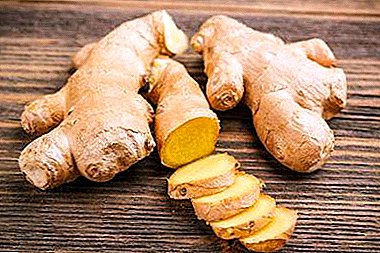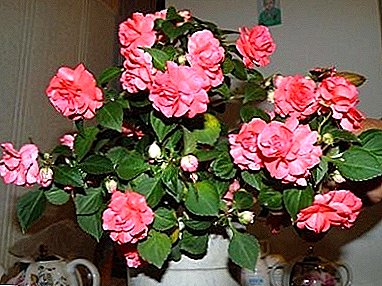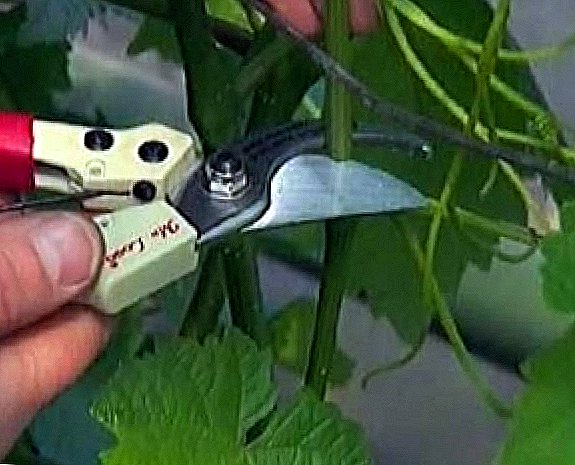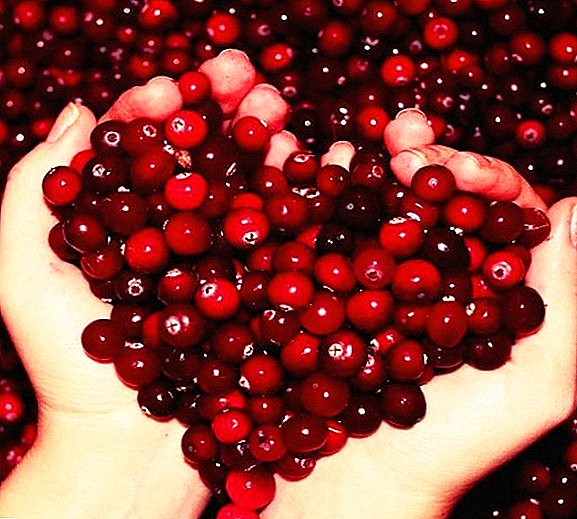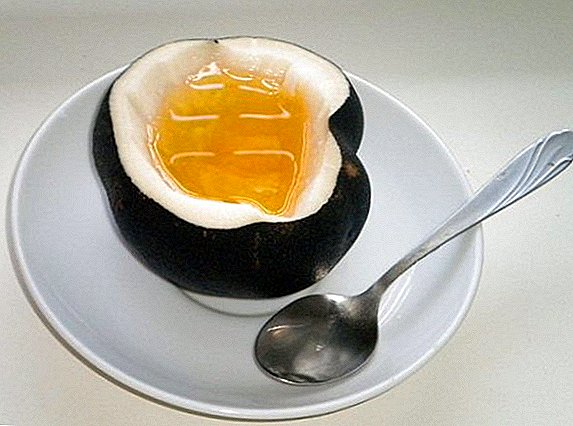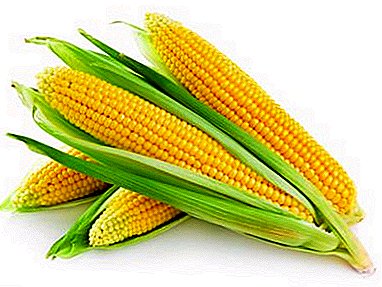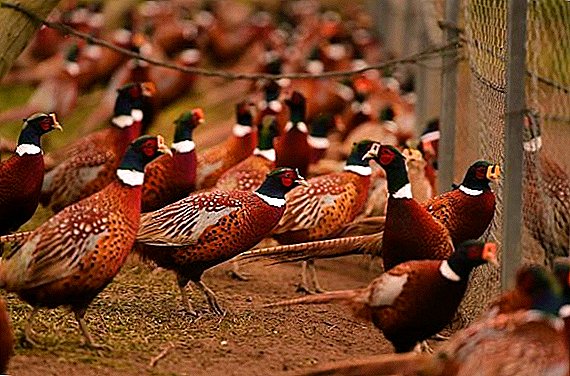 Exotic birds, such as pheasants, we used to see in zoos, but these birds can be bred in their compound. Under certain conditions of maintenance, the effectiveness of this case is quite high (profitability of the order of 50%).
Exotic birds, such as pheasants, we used to see in zoos, but these birds can be bred in their compound. Under certain conditions of maintenance, the effectiveness of this case is quite high (profitability of the order of 50%).
The advantages of breeding pheasants
- In this case, not so many competitors.
- Pheasant eggs are expensive, but they have regular customers.
- You can sell eggs of two kinds: fertilized and unfertilized. The latter will be in the price of dealers exquisite delicacies.
- The price also includes poultry meat. They are always interested in elite restaurants and supermarkets.
- A living bird is always needed for zoos, hunting farms, collectors and interested individuals.

What kind of pheasants can be kept at home
The most popular types of pheasants for breeding:
- Steppe Hunting. In its natural environment, it lives in forests at the edges, is resistant to ailments and temperature fluctuations, unpretentious in food. Differs in high egg production. Adult weighs 1.7-2 kg.
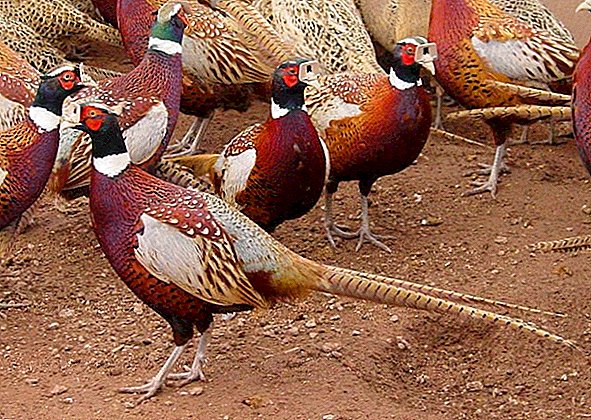
- Royal. Came to us from the highland of China. The length of the male (including the tail) is up to 210 cm, the females up to 75 cm. The weight of the male is 1.5 kg, the female is 1 kg. The female lays from 7 to 14 eggs.
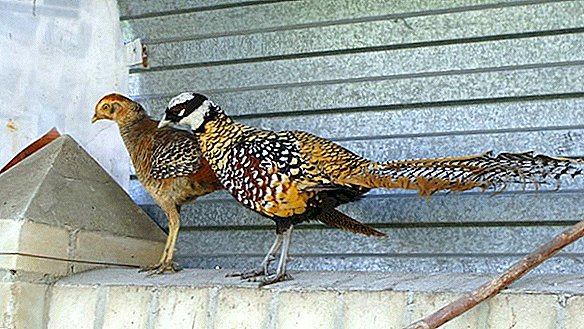
- Gold. Also come from China. It is a decorative breed, therefore it cannot be diluted for meat. Weigh birds 1-2 kg. females lay about 12 eggs.
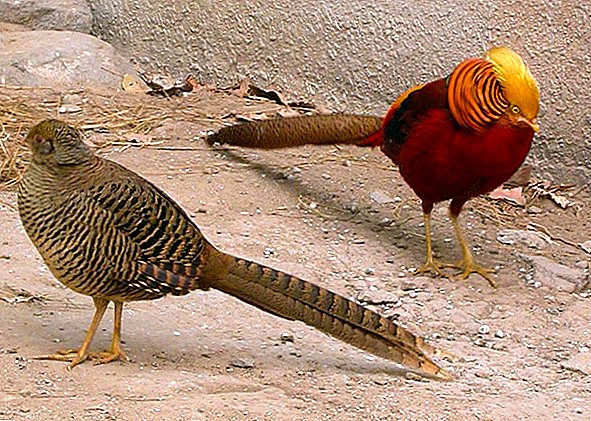
- Silver. Another guest from China. In this form, there is a pronounced sexual dimorphism in color: the males in the upper part of the body are white, in the lower part are black, the females are olive-brown with a gray pattern on top, and below are white with dark spots. Their meat is very valuable, and feathers are used to create stuffed animals and souvenirs. The female brings 6-15 pink eggs.

Did you know? The ancient Greeks believed that the first pheasant discovered Jason in his journey for the Golden Fleece.
Arrangement of the enclosure
Pheasants are best kept in cages, as they are wild birds and can safely leave the territory of the paddock. Aviary will give the bird the opportunity to move relatively freely, but will not allow to fly. To make an exotic bird comfortable, the following points should be taken into account when arranging its home:
- Dimensions of the enclosure must be calculated on the basis that one individual needs about 2 square meters of space. In the spring, this area should increase to 12 square meters.
- The size of the structure also depends on what types of pheasants you plan to breed and for what purposes. Those that feed off meat can live in small cages or cages, and those that are bred to hunt need space to learn how to fly.

- Some pheasants are monogamous, others are polygamous. This also needs to be considered when building an aviary. The first need to settle only in pairs, in polygamous birds there are four females per male.
- Eggs lay different species in different ways: some prefer to hide them in the grass, others in the bushes, and still others in the trees. Given this feature it is necessary to equip the interior of the enclosure.
 Mostly pheasants lay eggs right on the ground.
Mostly pheasants lay eggs right on the ground. - The design of the enclosure must be made convenient for the farmer, because females like to lay eggs in different places, so the breeder will have to search for them. It is best to divide the open-air cage into two parts: one is the sleeping room (dark room), and the other is a walking one, in which the birds will also eat.
- When building an open-air cage, it is best to use metal or wood (for the frame) and a galvanized grid. The size of the grid cells should not be more than 1.5 * 1.15 cm - a similar size will allow to avoid intruders (birds, mice and other small predators) entering the bird territory.

- In the aviary there must be a roof so that the pheasants could not leave it. It is advisable to make it from a soft material.
- Calculation of the number of feeders should be carried out taking into account the fact that an adult individual needs 20 or more centimeters of feeding place, young birds under the age of two months need about 10 centimeters.
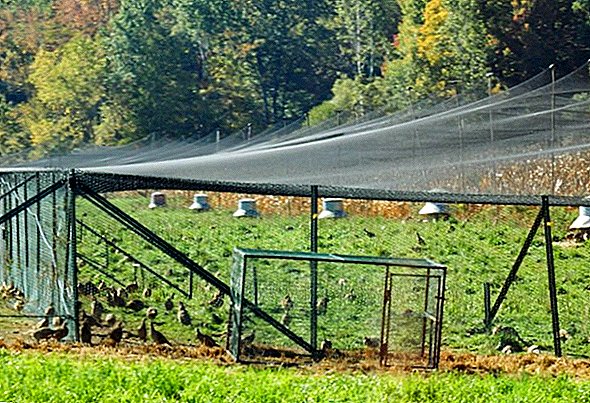
- Install the feeders must be on an elevation, in order to make it easier to fill them. It is also desirable to place containers with food at a distance from each other, especially if there are many pheasants in the aviary - then the birds will not be pushed during the meal.
- The drinker is best to choose reversible - it is a sore barrel, mounted on a bowl with grooves, on top of which is attached a handle for easy transportation. The number and size of drinkers is calculated taking into account the watering front. For adult birds, it is not less than 20 cm per beak, for chicks who are not yet one month old - at least 7 cm, 2-2.5 months old - at least 10 cm.
Access to pasture
Pasture can be equipped near the aviary or on its territory. Here, shrubs that create a good shade must grow; you can plant clover, plantain, coltsfoot, grass. On the territory of pasture should be drinkers and feeders, which should be attached to the fence.
Important! Feeders and drinkers should be filled so that the farmer visited the pasture as little as possible.
Care
In the aviary, you must regularly carry out: remove litter and excrement, wash and disinfect food and water containers. If you do not take these measures, the likelihood of ticks and other parasites in pheasants is high. Cleaning is carried out when it is found that food is scattered near the feeders, droppings and dirt accumulated on the litter. It is advisable to wash the feeders and drinkers twice a day.
Sand and fodder grasses are used as bedding. The sand is poured in a layer of 10-15 centimeters and is covered with grass on top so that the sand is not visible. Change sand produced as pollution. 
Feeding rules
The pheasant, like other chicken-like, is hawkish in food, but very voracious. The main components of his diet: barley, corn, wheat, cake. Boiled offal, meat and fish waste can be added to this list. The bird also needs vegetables and fruits: potatoes, pumpkins, cabbage, apples, carrots, beets, zucchini. Do not do without the green: shchiritsa, quinoa, nettle, wood louse, green onions.
You can prepare wet mashes from cereals and vegetables by adding fish oil and bone meal. An adult bird needs 80-100 grams of such feed per day. It is advisable to give the mixes warm. If you do not want to cook the feed mixture yourself, then you can feed the pheasants with purchased feed. Suitable for those intended for broiler chickens.
The diet of young build on a mixture of nettle, alfalfa, meal worms, boiled eggs. Place of water let's sour milk.
Important! Drink should be cold. It is replaced by 2-3 times a day.In the autumn-winter period, give the bird additional supplements (3 grams per day per individual), in the role of which yeast and fish oil can be used. You should also increase the portion of grain (per head should go more by 5 grams per day). It is useful to give sunflower, corn, millet, dandelion, clover, mountain ash.
 In winter, pheasants can hang cabbage
In winter, pheasants can hang cabbageThe rate of food indicated above is approximate. Every farmer must find the optimal amount of feed needed by his feathered one. If the bird does not eat the norm, then you can reduce it a little, but it is not recommended to overfeed.
Familiarize yourself with the popular breeds of pheasants, more in detail with common pheasant, eared pheasant, white pheasant, golden pheasant.Pheasants are fed twice a day. In the morning feeding must be given wet mash, and at lunch - cereals. It is impossible to give the bird spoiled grain.
The approximate diet of an adult pheasant is shown in the table.
| Feed group | Daily ration, g | |
| winter | summer | |
| concentrated (corn, wheat, millet, etc.) | 50 | 45 |
| juicy (carrots, potatoes, etc.) | 10 | 20 |
| animal (minced meat, cottage cheese, meat and bone meal, etc.) | 6 | 9 |
| vitamin (yeast, fish oil) | 3 | 2 |
| mineral (lime, salt) | 3 | 3 |
How to feed pheasants: video
Pheasant Egg Incubation
Females of pheasants do not have the instinct of brooding. Single individuals can stay on the clutch, and the rest will forget about it, so the farmer must take care of their offspring on their own. This requires an incubator.
Pheasants lay eggs of different colors: dark gray, gray, light gray, green gray, green, light green. The highest rate of hatching in light gray eggs, so it is desirable to select them for incubation, and the green ones are not worth paying attention to.
Learn how to select, store, disinfect, equip incubated eggs.It should also be noted that eggs selected for incubation should have a smooth shell, a regular shape and rather large sizes; it is undesirable to take too light or dark, small, thin shell and too round or oval.
You also need to reject eggs with two yolks, homogeneous internal structure, with yolk stuck to the shell - these deviations are noticeable when viewing the eggs on the ovoskop.  Pheasant Egg Incubation
Pheasant Egg Incubation
The laying is best carried out in the incubators with a turning mechanism so that the eggs warm up evenly from all sides. The temperature is set at + 38.3 ... +38.4 ° С, and the humidity is 54%.
Learn how to catch pheasants with your own hands, how to breed them, how to put on glasses from pecking, how and what to feed, how and what to treat.During the incubation period, the humidity should not exceed 54-60%. After 21 days, it is necessary to lower the temperature to +37.8 ° С, and raise the humidity by 20% - this will help the chicks to come to the light faster. The hatching process can take 1-6 hours and the chicks should stay in the incubator for another couple of hours until they dry out and do not adapt to the new environment.
Cultivation of pheasants in incubators: video
Young stock
The dried up and matured youngsters are transplanted either in cages or in sections on the floor. When the cellular content in the design of 32 * 42 cm with a height of 21 cm must be placed no more than 20 heads. In such bird cages they are kept for 2-4 days, and then transplanted into cells of 110 * 65 cm with a height of 35 cm. So they are kept for up to 10-12 days and transferred to enclosures-acclimatizers.
Cages are covered with sacking and installed in a heated room with ventilation, feeders and drinkers are installed in them. The first three days the temperature is maintained at +28 degrees, then lowered to +20 - in such conditions, the chicks grow to six months.
Did you know? At the end of the 16th century, pheasant breeding became widely popular in Britain, and birds were raised not only in hunting grounds, but also for decorative purposes.
If the cultivation is outdoor, then in sections per square meter there can be 20-25 heads, and one group should consist of no more than 500 individuals. The floor is lined with litter. At the bottom of the section should be continuous, so that the young did not slip through.
The first three weeks the chicks need heating: under the heat source, the temperature should be + 32 ... +34 ° C, indoors - 28 ° C in the first week, +25 ° C - in the second, +23 ° C - in the third and +22 ° C - in the fourth.
Growing pheasants: video
Top Pheasant Breeding Farms
Farms in Russia:
- Pheasant farm. Podmoskovnaya farm engaged in the breeding of pheasants for sale and for hunting. Also provides guided tours of its territory. Located in the village Alferov Chekhov district, Moscow region.
- "Russian Compound". Located in the Sverdlovsk region in the forest away from the road. Engaged in the breeding of birds for sale. He arranges excursions on his territory. Address: Sverdlovsk region, 25 km along the Novomoskovskiy tract, 800 meters from the Streletsky Dvor complex.
- Farm of pheasants and guinea fowls. Grows and sells a live bird. Provides customers with breeding stock for incubation, young animals and adults. Located in with. Yamnoye, Ramonsky District, Voronezh Region.
Learn how to cut pheasant fillets, pheasant meat is useful, whether you can eat pheasant eggs.
In Ukraine, there are very few large farms for breeding pheasants. Mostly this rare bird is bred in hunting and small private farms that do not even have their own site:
- Farm House Game. Founded in 2004 on a household basis. Now it provides consumers with high-quality food and live poultry grown on natural food, without antibiotics and other additives. The company is located in Kiev at 26-B Verkhovna Rada Boulevard, the production itself is located in the town of Khristinovka, Cherkasy region. Engaged in the delivery of products throughout Ukraine.
- "Hunting Pheasant". Grows poultry for breeding, for hunting and restaurants. Pheasants grow in semi-wild conditions and feed only on natural food without additives and growth stimulants. The farm is located on the street Pervomayskaya, 2B in with. Chupyra Belotserkovsky district of Kiev region.
Cultivation of pheasants for hunting: reviews
For breeding pheasants at home requires a free plot of land, the rent of which costs a lot of money (well, if you already have one). Money spent on the purchase of cells will be only a small fraction of the total costs. Fazanyi enclosures should be as spacious as possible because birds need to fly. For example, to equip three hundred square meters of land with pheasant enclosures will cost you about 2.5 tis. $. These costs will pay off for the season (of course, with good advertising of your company), since more than 400 birds should be kept in one aviary. Good luck to you in this difficult matter!









 Mostly pheasants lay eggs right on the ground.
Mostly pheasants lay eggs right on the ground.

